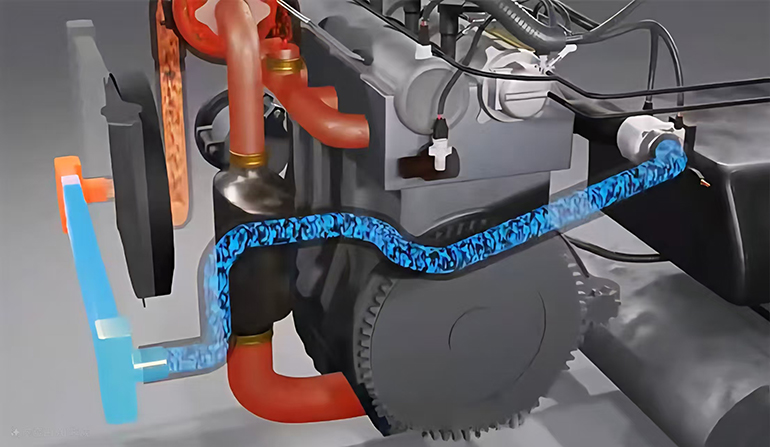Turbocharged Must-Read: How Intercoolers Boost Engine Performance!
2025-08-15
For those who love the thrilling power surge of turbocharging, have you ever wondered about that radiator-like component in your engine bay – the intercooler? It’s far from just decoration; it’s the unsung hero behind your turbo engine’s efficient and stable power delivery! Let’s dive into its critical role.

The Turbo Side Effect: Hot Air
A turbocharger harnesses exhaust gases to force more air into the cylinders – that’s how it boosts power. However, when air is compressed intensely, its temperature skyrockets (easily exceeding 200°C / 392°F). Hot air is less dense, meaning fewer oxygen molecules actually reach the cylinders – counteracting the very goal of increased power!
The Intercooler: Turbo Power's "Cool" Partner
The intercooler, short for "inter mediate cooler," exists to solve this heat problem. Installed between the turbocharger outlet and the engine’s intake manifold, it acts like a high-performance "air conditioner," specifically cooling the compressed air heated by the turbo.
How Intercoolers Significantly Boost Engine Performance:
1. Direct Power Increase: Cooling the air drastically increases its density. Tests show that for every ~11°C (~20°F) drop in intake air temperature, air density increases by about 3%. This means more oxygen enters the cylinders, allowing the Engine Control Unit (ECU) to inject more fuel. The result? More powerful combustion, translating directly into increased wheel horsepower and torque! This is the core performance gain.
2. Prevents Engine Knock, Protects Your Engine: High intake temperatures are a major cause of engine knock (an abnormal, destructive combustion phenomenon). By effectively lowering temperatures, the intercooler significantly reduces the risk of knock. This protects critical components like pistons, connecting rods, and cylinder heads from damage. It also allows the ECU to use more aggressive ignition timing, further unlocking potential power.
3. Optimizes Combustion Efficiency: Cooler, denser air mixes more evenly with fuel, leading to more complete and stable combustion. This not only improves throttle response but can also contribute to slightly better fuel economy (though not its primary purpose in a performance setup, efficient combustion is always beneficial).
4. Ensures Turbo System Stability: Continuous high heat can damage the turbocharger itself, as well as intake piping, seals, and other components. The intercooler reduces the thermal load on the entire intake system, helping to extend the lifespan and reliability of the turbo system and related parts.
Intercooler Types & Maintenance
The two most common types are:
Air-to-Air Intercoolers: Cooled by airflow while driving (ram air effect). Simple, reliable, and the most common choice.
Air-to-Water Intercoolers (Liquid-Cooled): Use the engine's coolant circuit for cooling. Offer more flexible mounting (e.g., top-mounted) and less speed-dependent cooling, but are more complex systems.
To Keep Your Intercooler Working Efficiently:
Keep Fins Clean: Regularly clean debris like bugs, dirt, oil, or fluff (e.g., cottonwood seeds) from the cooling fins to ensure optimal heat dissipation.
Check Pipe Connections: Ensure all boost pipes are securely fastened and free from cracks or leaks. Leaks cause pressure loss ("boost leak"), directly reducing power.
Summary
The intercooler is an indispensable component of a turbocharged engine. By scientifically cooling the hot, compressed air, it effectively increases air density. This not only unlocks significant power gains but also safeguards engine health and ensures stable operation. Next time you pop the hood, take a moment to appreciate this hard-working "silent guardian" of performance. Understanding its role is key to fully harnessing the potential of turbocharged driving!